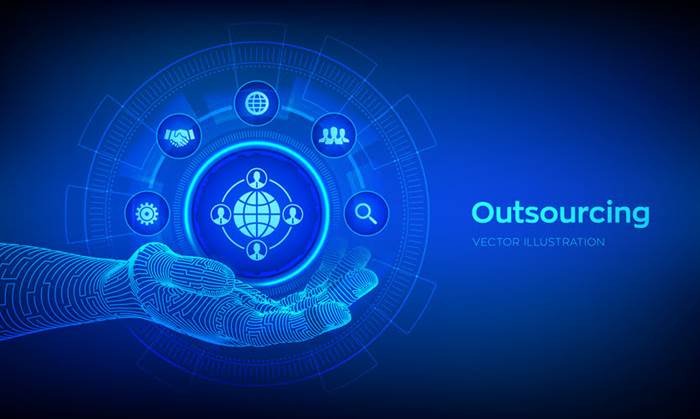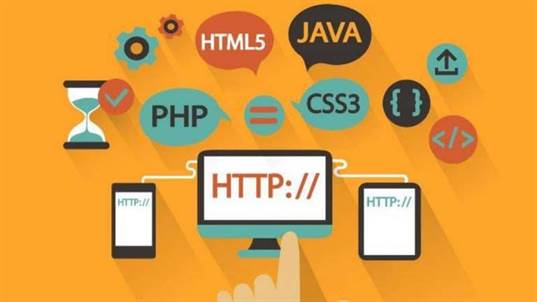By learning from historical data, AI can predict when a machine is likely to fail or need maintenance. This preemptive approach allows companies to avoid costly downtime and extend the life of their equipment. Artificial Intelligence (AI), particularly generative AI, is set to further accelerate the transformation of the manufacturing and industrial sector.
Businesses can free up their employees to focus on other tasks by automating the report generation process. For instance, consider a fashion products manufacturer utilizing AI to predict demand for different clothing items. The integration of AI in the manufacturing market has brought significant advancements to warehouse management.
AI Isn’t Taking Over Industrial Manufacturing (Yet): Here Are 3 Reasons Why
Frequent changes can lead to unforeseen space and material conflicts, which can then create efficiency or safety issues. But such conflicts can be tracked and measured using sensors, and there is a role for AI in the optimization of factory layouts. The utopian vision of that process would be loading materials in at one end and getting parts out the other. People would be needed only to maintain the systems where much of the work could be done by robots eventually. But in the current conception, people still design and make decisions, oversee manufacturing, and work in a number of line functions.

AI-powered software like can predict materials prices more accurately than humans and it learns from its mistakes. Recently, secondary battery has gained considerable interest worldwide due to its rising demand for electric vehicles (EVs) and hybrid electric vehicles (HEVs). The former is performed ex-situ by predicting in advance the battery behavior under specific conditions, while the latter is conducted in-situ by the battery management system (BMS) contained in a battery pack for EVs and HEVs. Pedestrian detection refers to the task of differentiating pedestrians on roads from other objects. Special attention is given to this task due to its importance for preventing vehicle-to-human accidents. For this specific task, Wang et al. [15] proposed the part and context network (PCN) that leverages the body part semantic information and the contextual information.
How the Circular Economy Creates a More Sustainable, Wealthier World
In particular, the growing public interest in industry 4.0, which focuses on revolutionizing the traditional manufacturing scene, has stimulated a deeper investigation of its possible applications in the related industries. Since it has several limitations that hinder its direct usage, research on the convergence of artificial intelligence with other engineering fields, including precision engineering and manufacturing, is ongoing. This overview looks to summarize some of the important achievements made using artificial intelligence in some of the most influential and lucrative manufacturing industries in hopes of transforming the manufacturing sites.
- Companies embracing this trinity of technologies will likely find themselves at the forefront of the next industrial revolution, armed with tools that foster innovation, efficiency, and sustainability.
- Examples of possible upsides include increased productivity, decreased expenses, enhanced quality, and decreased downtime.
- AI projects improved equipment uptime, increased quality and throughput, and reduced scrap.
- Imoto et al. [80] automated the classification process by using a CNN-based transfer learning method for monitoring the occurrence frequency of defect types that are useful for figuring out the root causes of process failures.
- In addition, data augmentation (e.g., random cropping, rotating, resizing, and flipping) is conducted to obtain a better model.
- However, amidst these changes, there were opportunities for innovation and new strategic approaches.
For instance, AI-powered automation can take over repetitive, time-consuming tasks, freeing up human workers to focus on more complex and value-adding activities. This not only results in higher productivity but can also improve the quality of work life for employees. AI can also assist in the predictive analysis of market trends, enabling manufacturers to make strategic decisions about product pricing and sales strategies. This advanced insight can help manufacturers stay competitive in the market, even when faced with the necessity of wage increases. Generative design uses machine learning algorithms to mimic an engineer’s approach to design. With this method, manufacturers quickly generate thousands of design options for one product.
Energy cost reduction
Artificial intelligence can have multiple applications in manufacturing, which can be generally categorized as smart production, products and services, business operations and management, supply chain, and business model decision-making. Smart production is the primary choice for deployment among manufacturing companies, followed by products and services. Popular industrial AI applications look set to focus more on products/services and supply chain management than smart production. Manufacturers leverage AI technology to identify potential downtime and accidents by analyzing sensor data. AI systems help manufacturers forecast when or if functional equipment will fail so its maintenance and repair can be scheduled before the failure occurs. Thanks to AI-powered predictive maintenance, manufacturers can improve efficiency while reducing the cost of machine failure.

When adopting new technologies where there’s a lot of uncertainty, like additive manufacturing, an important step is using NDT after the part’s been made. Nondestructive testing can be very expensive, especially if it incorporates capital equipment CT scanners (used to analyze the structural integrity of manufactured parts). Sensors in the machines can link to models that are built up from a large data set learned from the manufacturing process for specific parts. Once sensor data is available, it’s possible to build a machine-learning model using the sensor data—for example, to correlate with a defect observed in the CT scan. The sensor data can flag parts that the analytic model suggests are likely to be defective without requiring the part to be CT-scanned. Only those parts would be scanned instead of routinely scanning all parts as they come off the line.
Getting started with AI in manufacturing
The framework consisted of a feedforward control (FFC) and feedback control (FBC), together with a neural network predictive model, a bias-update module, and a real-time optimizer. Through this framework, nonlinearity, large time-variant delays, disturbances, and unsynchronized regulation of two manipulated variables (MVs) have been addressed. Both the coating weight variance and the transition time were greatly reduced as well. Mao et al. [79] introduced a groundbreaking neural network model consisting of the BP algorithm and the genetic algorithm for the first time to model and predict the thickness of the hot-dip galvanized zinc sheet. In the model, the major influences of the coating thickness such as the stripline speed, air knife pressure, air knife to strip distance, and air knife height are used as the model input parameters. Furthermore, the coating thickness is the model output parameter of the hot-dip galvanizing system.
Based on DCGAN, a self-setting threshold scheme is proposed to overcome the drawback. As DCGAN is adequately trained, a threshold for HCM can be automatically generated through its output. The threshold value can be automatically created by the output of the G network in the DCGAN model. To this end, the whole scheme creates a self-setting HCM threshold based on a DCGAN model to observe a WT bearing. First, the WT component with a significant failure rate and downtime is the rotor blade.
Shop floor performance improvement
In future, manufacturers will be able to perfect the production process by eliminating defects. Li et al. [73] proposed precise bending force prediction, which can enhance the control precision and flatness of the strip crown and further boost the strip shape quality. The findings indicate that GPR, with the best prediction precision, better stability, and reasonable computational expense, is the optimal model for bending force prediction.

It is demonstrated that rather than training the perception and control systems separately, it is better to do it in an end-to-end fashion. This white paper presents the benefits that can be achieved through industrial AI applications in operational performance, sustainability and workforce augmentation as well as six main barriers hindering their adoption at scale. It also highlights over 20 successful AI applications implemented by leading manufacturers and an example of a step-by-step approach to implementing scalable AI applications in manufacturing and supply chains.
Products and services
This problem has become particularly relevant given all of the supply chain issues over the past year. Using scheduling agents based on reinforcement learning,3Reinforcement learning is a type of machine learning in which an algorithm learns to perform a task by trying to maximize the rewards what is AI in manufacturing it receives for its actions. For more, see Jacomo Corbo, Oliver Fleming, and Nicolas Hohn, “It’s time for businesses to chart a course for reinforcement learning,” McKinsey, April 1, 2021. Companies
can translate this issue into a question—“What order is most likely to maximize profit?
The attached AI system can alert human workers of the flaw before the item winds up in the hands of an unhappy consumer. Some manufacturing companies are relying on AI systems to better manage their inventory needs. Companies can use digital twins to better understand the inner workings of complicated machinery. In the event of these types of complications, RPA can reboot and reconfigure servers, ultimately leading to lower IT operational costs. Collaborative robots — also called cobots — frequently work alongside human workers, functioning as an extra set of hands. For example, applying thermal treatment on an additive part can be done straight from the 3D printer.
Deloitte refers to one or more of Deloitte Touche Tohmatsu Limited, a UK private company limited by guarantee (“DTTL”), and its network of member firms, and their related entities. After establishing a clearly-defined scenario, complete data foundations, and a professional team, the next step is designing a prototype and running a proof of concept (POC) of the AI process. Iteration and large scale implementation can be carried out if the prototype proves feasible. It has been used to create new types of components that are cheaper, lighter, and sturdier than existing components, improving the overall qualities of many products from cars and aircraft to prefabricated houses and structures. Importantly, rather than replacing human workers, a priority for many organizations is doing this in a way that augments human abilities and enables us to work more safely and efficiently. Implementing AI in manufacturing facilities is getting popular among manufacturers.